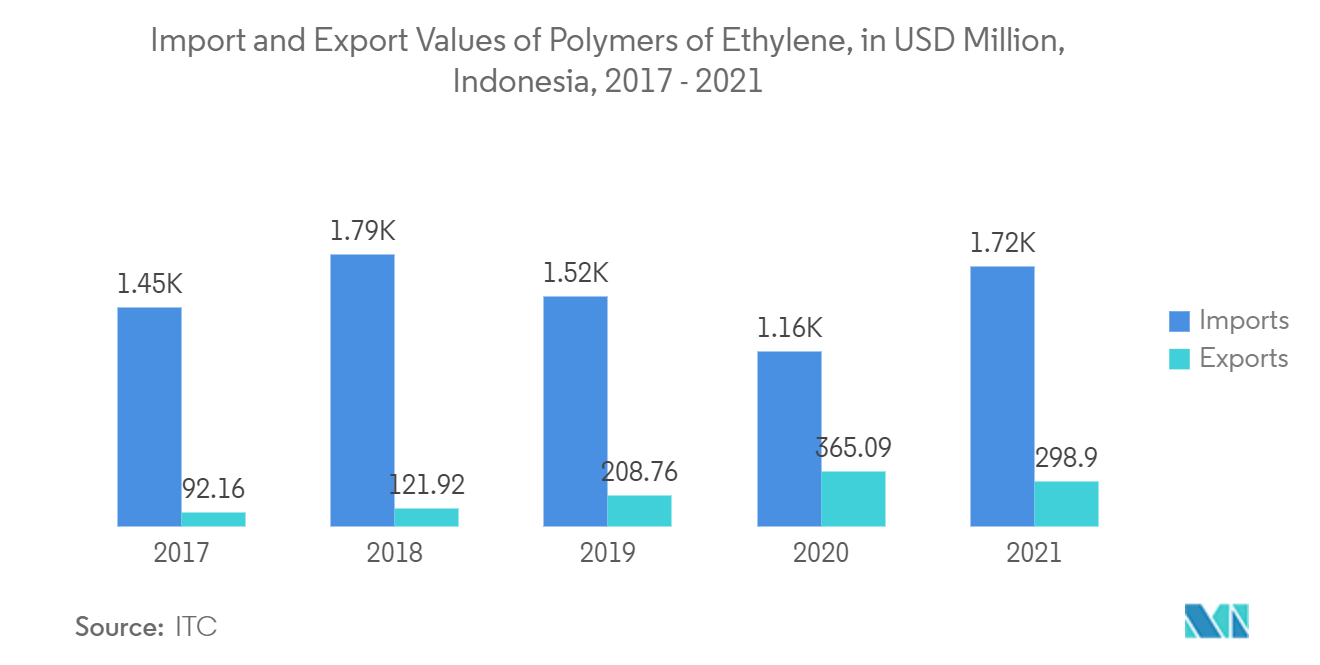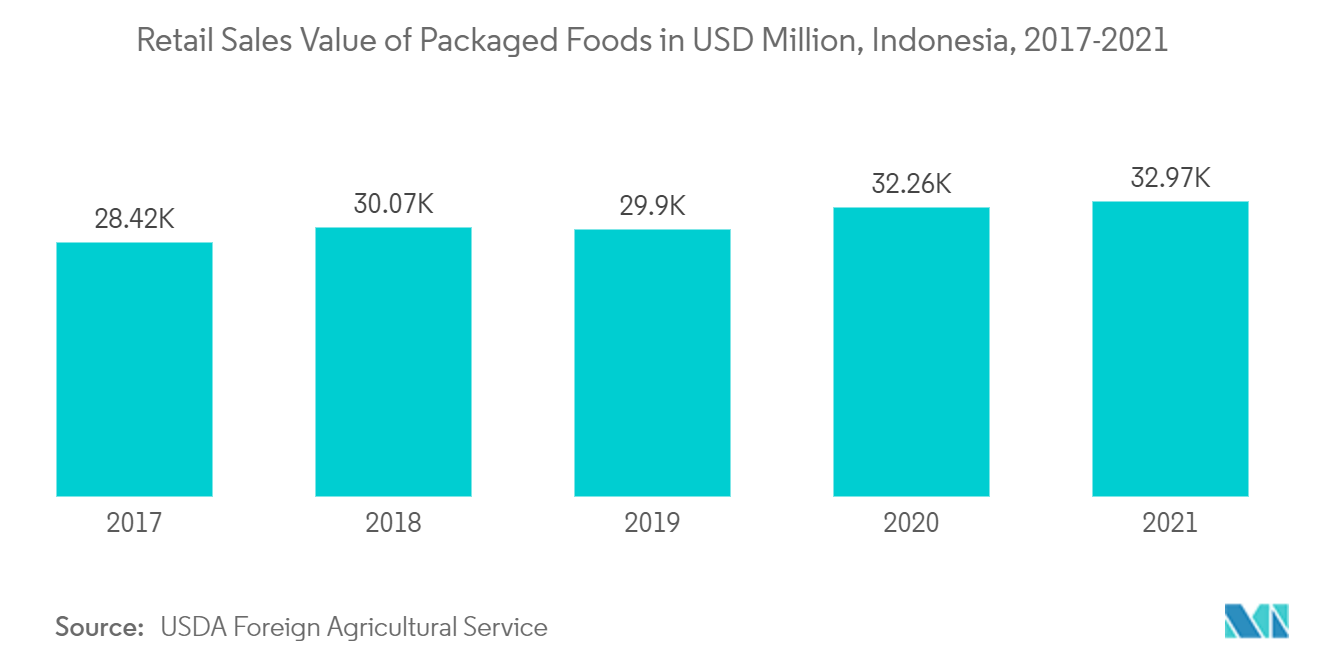Market Trends of Indonesia Flexible Packaging Industry
This section covers the major market trends shaping the Indonesia Flexible Packaging Market according to our research experts:
Packaging Films to Witness Significant Growth
- Polyethylene thermoplastics manufactured from petroleum include high-density polyethylene (HDPE) and polyethylene high-density (PEHD). Due to its exceptional versatility, HDPE is the most extensively used plastic. Beverage bottles, cosmetics like shampoo, and home goods are among the common uses for HDPE. HDPE makes cereal box liners and the thin plastic vegetable bags found in grocery stores and on bread. Such significant material characteristics create the demand for PE products and contribute considerably to flexible packaging in the country.
- BoPET film possesses good stiffness, a smooth surface, and good chemical and abrasion resistance. Thus, they are preferred for easy processing and achieving an ideal oxygen barrier. BoPET-primed films achieve improved adhesions with ink, adhesive, and aluminum metallization.
- In addition, these films find their applications in multiple industries, such as sustainable energy, healthcare and hygiene, food and beverage, automotive, consumer electronics, and more. Among these end-user industries, it is widely used as a surface film in laminations by the packaging industry as it helps protect food against oxidation and maintains a longer shelf life.
- BOPP films are transparent Biaxially oriented polypropylene films designed to offer high performance, attractive aesthetics, and ease of conversion for flexible packaging and other applications. These films possess numerous properties, such as high tensile strength and improved stiffness, lower elongation, higher tensile strength, better gas barrier, and lower haze than CPP. Also, BOPP films are significantly adopted for packing food materials due to stringent food packaging requirements. The package helps protect the nutritional properties of the food until final consumption.
- Polyvinyl Chloride (PVC) films are thin thermoplastic films in rigid and flexible forms with good cling, clarity, and puncture-resistant properties. Depending on the requirements of the applications, it could demonstrate rigidity or flexibility and feature a transparent, colored, and glossy finish. Due to their versatile nature, these films use in pharmaceutical and food and beverage packaging. Moreover, the consumption of flexible PVC films has increased due to their demand as a clung wrap for food service, vacuum packaging for meat and pre-cooked meals, and shrink sleeves because of their strength, transparency, processability, and low raw material cost.
- About benefits, the PVC films do not affect the packaged food, guard against contamination by preventing transmission of germs during distribution when used as cling films, and oxygen and water barrier qualities that help extend the food shelf life are preferred in the food packaging industry.

Food Industry Holds Major Market Share
- The COVID-19 pandemic-related market volatility generated logistical challenges throughout 2021 that hampered the need for packaging materials. However, Indonesia's packaging sector experienced a crucial market and has shown major developments in flexible packaging for food in the last few years. This may be seen in the growth of e-commerce, which necessitates unique shipping packaging. Additionally, there has been an upsurge in frozen foods with longer expiration dates.
- The demand for flexible packaging solutions is mainly driven by millennial customers in Indonesia, as they prefer single-serving and on-the-go food. As these products are primarily designed to be portable, durable, and lightweight, flexible packaging is a well-suited option to pack such products.
- Increased spending on bakery and cereal bars, short-run ready meals and coffee or hot chocolate sticks and pouches, dehydrated and dry foods (instant soup, gravy and sauce packets, rice, and food mixes), snack foods and nuts, spice foods, chocolates and sweets, ice-cream novelties, and bakery products, such as cookies (biscuits), cakes, and chips, have increased considerably in Indonesia during the past few years.
- Flexible packaging goods, such as stand-up gusseted and pillow pouches, are commonly used in the food industry. Pillow pouches have also seen significant growth as their use in the food, beverage, and dairy industries have increased. Some essential qualities that positively influence product penetration are low cost, good sealing ability, and cost-effective transportation.


